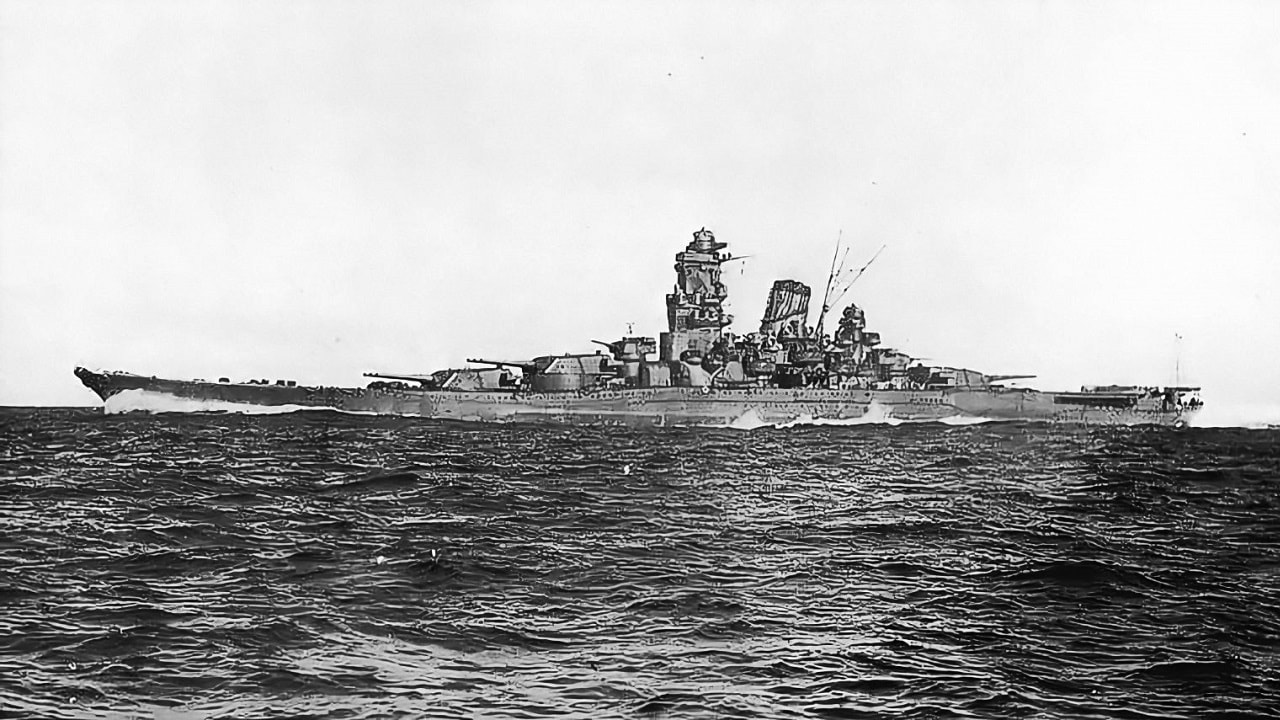The era of the big battleship passed during World War II. Even during the time, some nations would not give up on these massive warships for some reason – and Japan was one of them. The Musashi was one of the biggest battleships ever but was obsolete right from the start: In March 2015, following years of meticulous historical research and seafloor terrain analysis, a team led by Microsoft co-founder Paul Allen announced that they had found one of the most impressive battleships ever built, the Imperial Japanese Navy’s Musashi.
The sister ship of the Yamato was discovered by Allen’s team aboard his motor yacht, the M.Y. Octopus, at a depth of approximately 3,280 feet (one kilometer) in Philippine waters. Japanese naval historian Kazushige Todaka confirmed its identification.
The 73,000-ton (66,224 metric tons) Musashi and sister ship Yamato had been the largest battleships the world had ever known. Allied forces sunk the Musashi on October 24, 1944, during the Battle of Leyte Gulf, considered the largest naval battle of World War II and quite possibly the largest naval battle in history. Almost half of the Musashi‘s 2,399-man crew was lost.
The efforts to find the wreck site had begun 11 years earlier and were based on four different sinking positions in the Sibuyan Sea, including both the “official” Japanese and U.S. Navy positions.
Mighty Warship
Named after the former Japanese province of Musashi, she was one of three Yamato -class battleships constructed for the Imperial Japanese Navy beginning in the late 1930s.
These would prove to be the most heavily armored warships ever built, while each would also be armed with 46 cm (18.1-inch) naval rifle guns. Those were the most powerful guns ever installed on a battleship, and while these may have matched the United States Navy’s 16-inch 50-caliber Mark 7 guns at long ranges, in close-range engagement the penetration power of the Japanese guns was believed to be unsurpassed.
Lackluster Career
When she was commissioned in 1942, Musashi was modified to serve as the flagship of the Combined Fleet, but the IJN never fully utilized her or Yamato. The tide was turning for the IJN, which simply lacked the air cover to adequately protect her.
While she sortied several times in 1943 in unsuccessful searches for American forces, she primarily was used to help transfer forces and equipment between Japan and various occupied islands. She was hit by a torpedo from a U.S. Navy submarine in early 1944 and was forced to return to Japan for repairs. During that time she received additional anti-aircraft armament, but it wasn’t enough to save the warship.
Musashi had failed to make contact with the American surface fleet during the Battle of the Philippine Sea in June 1944, but it has been suggested that may have been for the best. Less than five months later, she took part in the Battle of Leyte Gulf, the largest naval battle of World War II and perhaps naval history. Musashi was sunk after taking an estimated 19 torpedo and 17 bomb hits from U.S. Navy carrier-based aircraft.
As The Diplomat reported, “the sinking of Musashi was the final answer to the challenge that Billy Mitchell made to the utility of warships in the early 1920s.” However, it also noted that no air force in the world was capable of inflicting such damage on a moving, well-defended target before mid-1944, when the U.S. Navy was able to accumulate a fleet of pilots, attack aircraft and the carriers of size and lethality that hadn’t even been envisioned in 1942, much less 1921.
In hindsight, it would be easy to suggest that the construction of Musashi and her sister ship was wasteful, the argument continues. Yet, it took four hours for the majestic battleship to sink and only after taking damage that would have certainly crippled any carrier of the era. With better air cover, Musashi would have been a serious threat – and certainly one of the most powerful battleships ever constructed.
Now a Senior Editor for 1945, Peter Suciu is a Michigan-based writer who has contributed to more than four dozen magazines, newspapers and websites. He regularly writes about military hardware, and is the author of several books on military headgear including A Gallery of Military Headdress, which is available on Amazon.com. Peter is also a Contributing Writer for Forbes.

